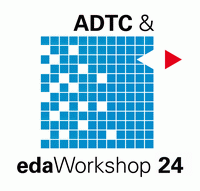Energy Efficiency in DRAM
Volker Kiefer, Qimonda
Abstract:
Energy efficiency in electronic systems is a dominant topic in our industry. Among many other components, almost every electronic system contains memories and specifically DRAMs. Their energy consumption depends on the target application.
The Si technology used to manufacture a DRAM provides an important lever for optimizing its energy consumption. This is independent of its final application market. Smart circuit design can also contribute significantly to energy saving. Here, applications drive the implementation goals. For example, energy consumption in standby mode typically is crucial for mobile devices, whereas server applications demand reduced power in active mode. Innovative circuit development addresses these different goals. Furthermore, EDA forms a crucial base technology for enabling energy efficient designs.
This presentation will provide an overview of DRAM’s contribution to energy efficiency and the required next steps for further improvement.
Curriculum Vitae
 Volker Kiefer is Vice President for CAD and Software Development at Qimonda. His responsibilities include definition, implementation and maintenance of the Qimonda DRAM design flow, software development, resolution enhancement techniques and TCAD. After receiving his diploma in Computer Science in 1991 from TU Munich, he worked at Motorola in Germany and in the US, holding ASIC and CAD engineering positions. In 1997 he joined Siemens/Infineon in the DRAM Development Alliance in Burlington, VT. Since then he has led design and CAD teams in the US and Europe within Infineon’s Memory Products business unit, which became Qimonda in May 2006.
Volker Kiefer is Vice President for CAD and Software Development at Qimonda. His responsibilities include definition, implementation and maintenance of the Qimonda DRAM design flow, software development, resolution enhancement techniques and TCAD. After receiving his diploma in Computer Science in 1991 from TU Munich, he worked at Motorola in Germany and in the US, holding ASIC and CAD engineering positions. In 1997 he joined Siemens/Infineon in the DRAM Development Alliance in Burlington, VT. Since then he has led design and CAD teams in the US and Europe within Infineon’s Memory Products business unit, which became Qimonda in May 2006.











